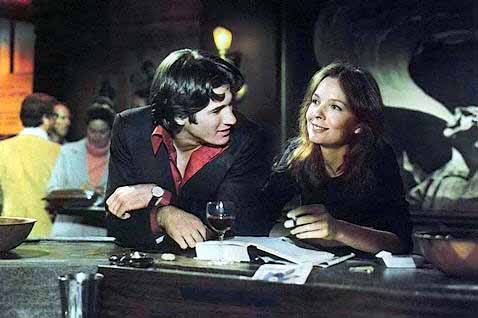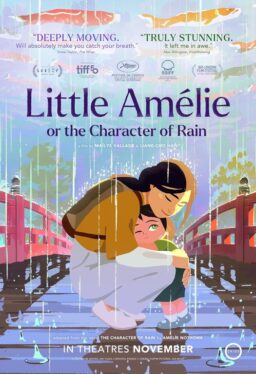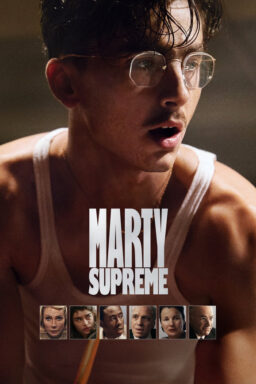Richard Brooks hunched his shoulders against a cold State Street wind and peered past the Christmas windows at Marshall Field’s.
“Willya look at that,” he said, wonderingly. “Howya gonna tell ’em?”
There was a Salvation Army bucket in the middle of the sidewalk, and shoppers were automatically reaching into their pockets for dimes and quarters as they walked past. Trouble was, both the bucket and the window displays were props ‘for Brooks’ new movie, “Looking for Mr. Goodbar.” They weren’t actually due on State Street for another week.
What was he going to do with the money?
“Give it to the Army. They saved my life once. I was freightin’ around the country in the ’30s – a kid with a bunch of old-timers — and we wound up in Indiana one night drinkin’ canned heat. That was no place for me. I went to the cops, but they wouldn’t even put me in jail for a night. Finally about 11 o’clock I went to the Salvation Army, and no questions asked. They gave me a shower, bowl of soup, bread….I told myself, if I can get through this night, I’ll be OK.”
Brooks made it through that night to become one of America’s most respected writer-directors, but a lot of his films have reflected his time on the wild side: “The Blackboard Jungle,” “Cat on a Hot Tin Roof,” “In Cold Blood” and now the harrowing drama based on Judith Rosner’s best seller about a lonely young woman who picks up the wrong man in a singles bar. He takes her home and kills her.
“What we’re gonna do in this shot,” he said, “is, Diane Keaton walks up to the Christmas window, here, and we see her reflection in the glass. She’s daydreamin’ about this professor at school she’s got a crush on, and we cut to a short fantasy scene here they’re both on ice skates. Then she brings herself back to reality and turns away — we can see how happy she is — and she walks into the street and almost gets hit by a cab, because her mind’s a million miles away….”
Diane Keaton. She was the great-looking actress who played Michael Corleone’s wife in both parts of “The Godfather,” Woody Allen‘s best friend in “Play It Again, Sam” and one of Allen’s beauties of the Napoleonic era in his “Love and Death.” Wasn’t the young woman in “Looking for Mr. Goodbar” supposed to be, ah, sort of plain? Pathetic and forlorn?
“Diane is right for the role,” Brooks said. “She’s a shy girl, I think, kinda quiet. Wonderful actress. She’ll look right in the movie. Here she is now.”
And here she was, looking great, wearing jeans and boots and a long fur coat, looking fresh as a college sophomore. She had half an hour before the next shot and wanted to see Field’s. We went inside, past all of the counters filled with barometers and binoculars and expensive perfumes, past the expensive porcelain animals that nobody I know owns. She looked up at the center rotunda with her mouth open in delight.
“This is more beautiful than anything new could be,” she said, “But this isn’t the store designed by Louis Sullivan?”
No, but it was two blocks away, so we walked down, had a look at Carson Pirie Scott & Co., walked over, to the Monadnock Building and came back by way of the Calder, the Chagall and the Picasso.
“Chicago, a place like Chicago, is one of the reasons I live in New York,” she said. “That sounds wrong. I mean, I love the city feeling, all the buildings and people…Los Angeles is too empty for me. But here you can see the buildings: They’re not lined up so densely they push each other aside.”
Back on State Street in front of Fields, Richard Brooks was almost ready for his next shot. Diane Keaton walked across the street to a trailer to be made up while Brooks and his cinematographer checked distances with a tape measure to be sure their shots would match.
“She has to look exactly the same size in the fantasy and when she comes back to reality,” Brooks said, “so that we understand the continuity between what she’s thinking and where she is next.”
Stepping back off the curb to survey the shot, he looked down State Street. He was apparently also not a Los Angeles partisan.
“This movie had to be shot in a big city,” he said. “Someplace where people can get lost, that looks big. The movie isn’t set in Chicago specifically so much as it’s set somewhere in a big, lonely American city. Could be Kansas City, St. Louis, Detroit. But not New York or L.A. or San Francisco — people are sick of seeing them on TV. Chicago they don’t see so often.
“But it’s a city like this where I could see the characters from ‘Looking for Mr. Goodbar.” The girl’s a teacher, she’s got something to do during the day that gives her satisfaction, but at night she’s lonely, she has no place to go, she doesn’t fit in because she doesn’t correspond to the idea of beauty that society foists on her. So she goes to places like this lousy bar, this singles joint for losers, and she makes a real bad choice.”
Was he going to shoot the bar in Chicago?
“No, it’ll be a set. We’ll have to be able to shoot there quite a lot. But it won’t be…it won’t be the same place on 72d St. in New York that was in the book. It’ll be…just some sad place, some bar out here in the middle of the country in some big city. “But we have some other great locations here, Holy Name Cathedral, the Loop…The other day, we’re up in Graceland Cemetery, shooting this sinister bronze figure all wrapped in a cloak. Looks like death.
Unnerving. And what’s the name of the person buried here? ‘Graves,’ of course.”
Diane Keaton was back, looking not very much like the girl who’d gazed up at the rotunda at Field’s. Now she was plainer, more wistful, forlorn, like the Judith Rosner character. The transformation had been accomplished with clothing, makeup, hair and perhaps mostly by what she was projecting about herself.
Brooks watched her quietly.
“A marvelous actress,” he said. “In this entire film, there’s only one scene that she doesn’t both lead us into and figure in. That’s what took me so long writing the screenplay. But what an acting assignment. “There’s a scene where she’s supposed to be 16. She says she can’t play 16, we’ll have to find an actress to play her at 16. I ask her to think back to when she was 16, and tell me what she looks like in her memory. Naturally, she looks like she does today: In your memories, you always look the same. So I told her to think that way and the scene would work.” A pause. “Think it will? Maybe so.”
Then Brooks was talking Diane Keaton through the scene, and the police were letting a few members of the crowd walk in front of the cameras, as extras, and then Keaton was looking in the Christmas window at Field’s, playing a character who would never again be as happy in life as she was just then in her fantasy. She came out of the reverie, shook her head, turned, smiled to herself and walked toward the curb.
Behind the camera, Richard Brooks pulled up the hood of his parka and jammed his hands into his pockets. “Cut. Print.” Another pause: Very quietly: “She looks just right, doesn’t she?”












